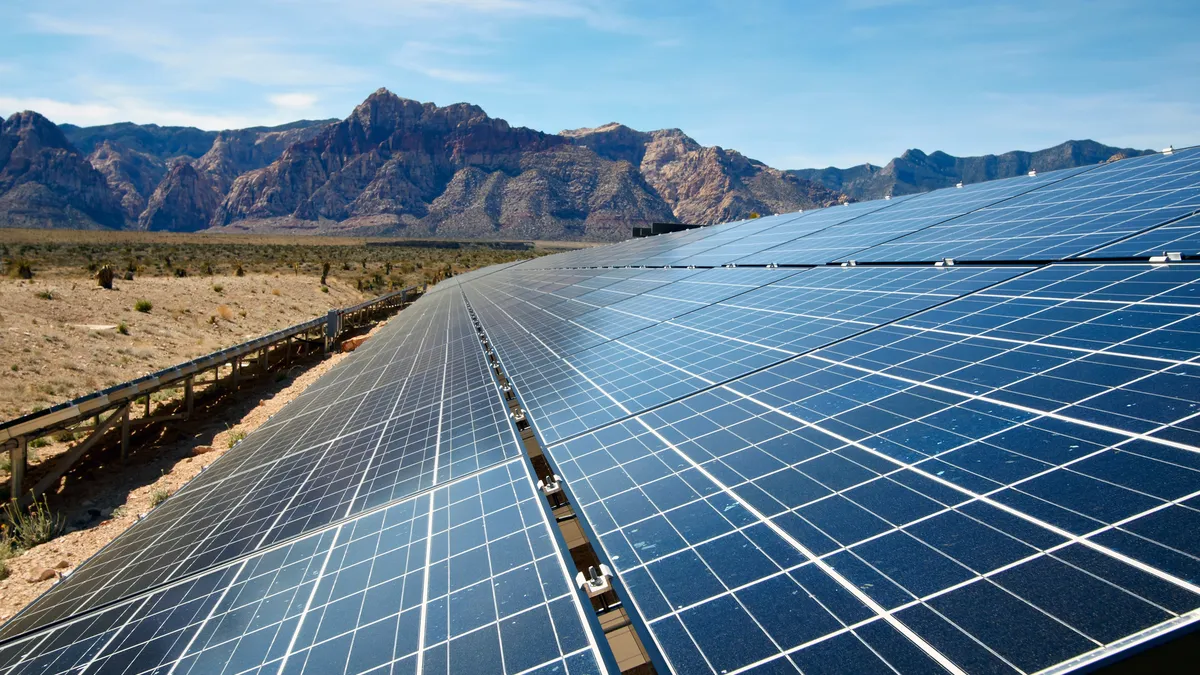Dive Brief:
-
The California Public Utilities Commission (CPUC) is proposing to adopt a 46 million metric ton (MMT) greenhouse gas emission target for the electric sector in 2030, to keep load-serving entities on track to meet the state's goal of supplying 100% of electricity from zero-carbon resources by 2045.
-
The CPUC's proposed decision also outlines the optimal system portfolio to reach that goal — and it includes tripling current levels of battery storage capacity, and doubling pumped storage or some other kind of long-duration storage technology by 2030.
-
Commissioners will consider the proposal at the agency's March 26 meeting, and load-serving entities are scheduled to file their integrated resource plans (IRPs) by July 1.
Dive Insight:
California conducts a two-year integrated resource planning cycle, with the first year focusing on a reference system portfolio — the optimal portfolio of electric resources that takes into consideration emissions goals, reliability and affordability. In the second year, the agency reviews individual load-serving entity IRPs. The electric sector greenhouse gas target is re-evaluated every cycle.
The 2019-2020 reference system portfolio would require extensive new resource build-out by 2030 — including substantial increases to battery and long-duration storage, more than doubling current solar capacity and a 30% increase to wind capacity. It identifies a need for around 1 GW of long-duration storage by 2026, and new out-of-state wind resources by 2030. While the proposal does not require any procurement, the commission would "strongly encourage" LSEs to plan for these resources. The agency is also interested in developing geothermal and offshore wind, "as both continue to hold promise for meeting resource diversity and capacity needs for the future."
According to the CPUC, at least 20 stakeholders voiced concerns about being overly dependent on battery storage — including the California Independent System Operator, which said in comments that cycling and replacement costs may not be fully incorporated into the commission's models. CAISO is also considering how multiple days of cloud coverage could impact solar production — "and the ability of storage to charge from solar resources."
"The commission itself raised the concerns of putting too many eggs in that basket and they didn't really answer their own concerns," Nancy Rader, executive director of the California Wind Energy Association, told Utility Dive. The state should be asking whether it needs more diversity in resources in 2030, she said, so that it isn't relying only on battery storage to develop and operate the way it wants it to.
"This is just uncharted territory," she said.
Erica Bowman, director of environmental strategy at Southern California Edison (SCE), acknowledged concerns around having a diverse resource mix but given that California's 2045 goals are dependent on a high penetration of renewables, "you're going to need some type of flexible resource — whether it's battery storage or pumped hydro storage or some other alternative storage mechanism that's developed in the future…" she told Utility Dive.
The proposed 46 MMT target for the electric sector "represents a challenging portfolio to develop in less than a decade," including large investments in solar and battery storage, according to the proposed decision. But the target might not be enough to effectively meet California's clean energy goals, Bowman said. In a whitepaper released last November, SCE estimated that the electric sector would need to reduce its emissions to 30 million metric tons by 2030, although variations in the way the CPUC and SCE account for behind-the-meter combined heat and power make up for around 6 million metric tons of the difference.
"For California to achieve its 2030 decarbonization goals, I think we really need to focus on decarbonizing the electric sector, and doing it in a more aggressive way than what the commission has laid out here," especially as the state starts to electrify vehicles as well as space and water heating, she said.
"The more aggressive we can be … it's going to make it a bit easier for us to figure out that last 20% that needs to be decarbonized," Bowman added.















